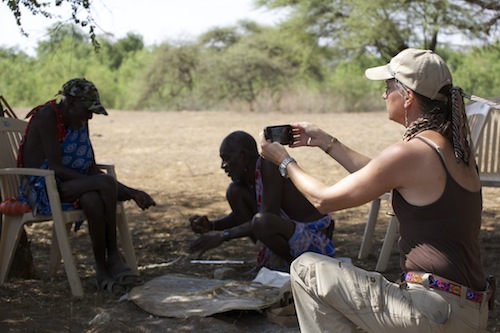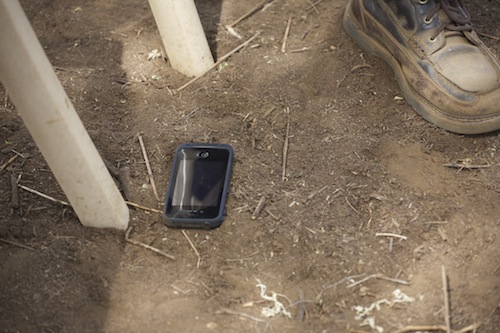iPhone Lifeproof Case, part 2
 At work on a recent volunteer project in Maasailand.
At work on a recent volunteer project in Maasailand.
After using the Lifeproof Case for iPhone 4S for over a month of travels—from the cold, wet climes of England and Scotland, to the hot, dusty world of Kenya's South Rift Valley (see Part 1)—the jury is in: two thumbs-up.
The iPhone is an indispensible tool for our work: I use it increasingly for daily snapshots for our Flickr and social media feeds; it's my only GPS tool; the currency calculator and various language dictionaries are fantastic for travel; and oh yes, it's a global phone, too (Verizon Wireless in the U.S. will unlock your iPhone, and you can purchase local micro-SIMs in most major destinations; I just find the local Apple network dealer and head to the larger shops where I target the young, hip sales staff—in Kenya it took 15 minutes to buy and set up an iPhone SIM and have data and voice for a month for $20).
The Lifeproof Case is the best case I've used so far, including the Otterbox and a Sea to Summit soft case, which really isn't suited to daily use. Minor gripes are that you have to use the Apple power cord only (I prefer the retractable cords from Ziplink) and the dongle for the headphones jack is a bit of a pain and quite prone to disappearing into the maw of my rucksack. Major gripe is that you will probably have to test 2-3 to get one that fits right and doesn't have a wobbly, useless plastic cover on the front.
I didn't test the 3 meter drop height, but I did drop the phone a couple times onto the talc-like dirt of the Rift Valley floor and was very grateful for the dustproof membranes and glass protecting the speaker and lenses.
 Oops. Dropping an expensive iPhone isn't so painful with the Lifeproof.
Oops. Dropping an expensive iPhone isn't so painful with the Lifeproof.
The Lifeproof Case is $80 but worth every penny to protect an expensive tool. Lifeproof.com
